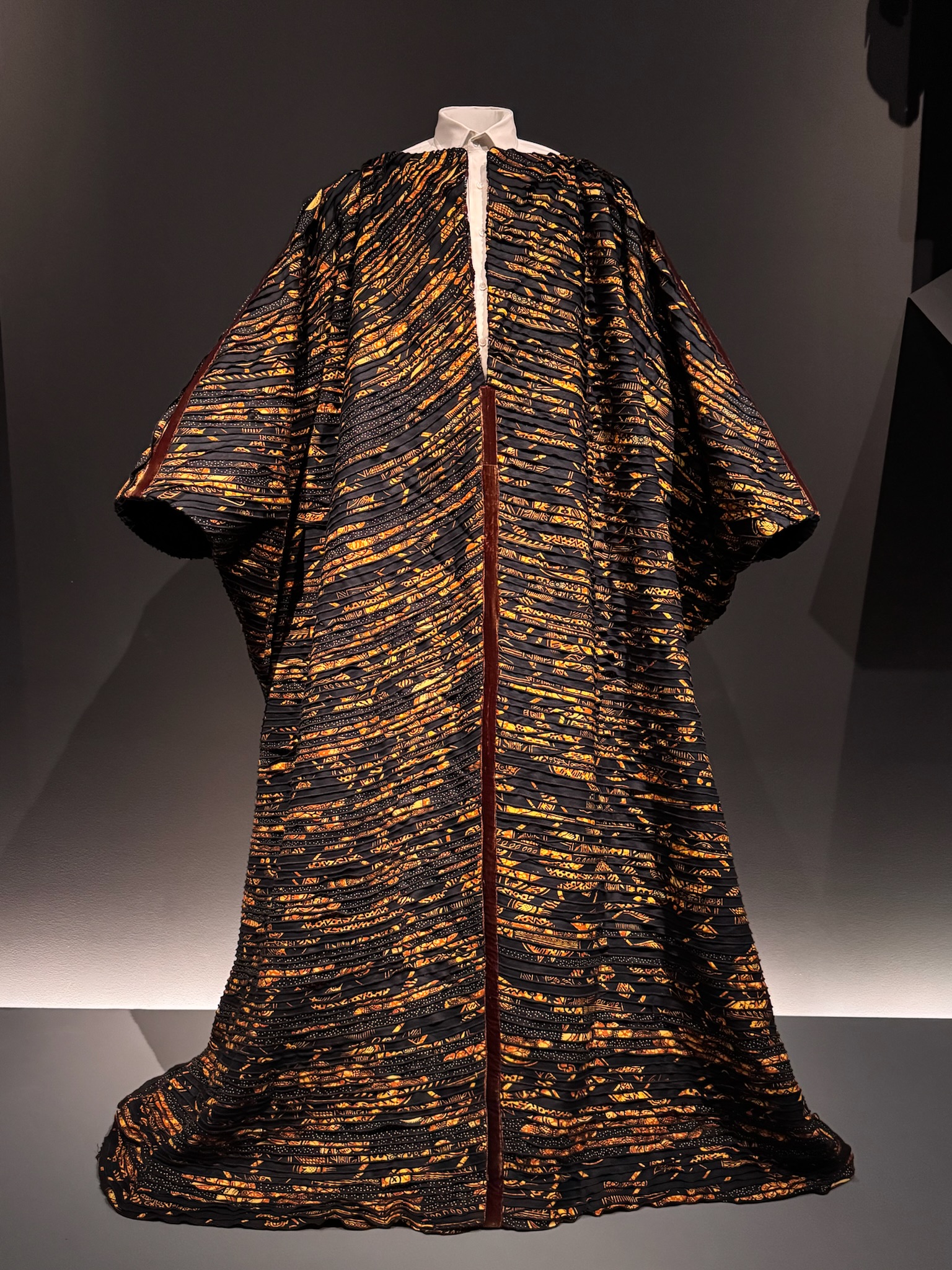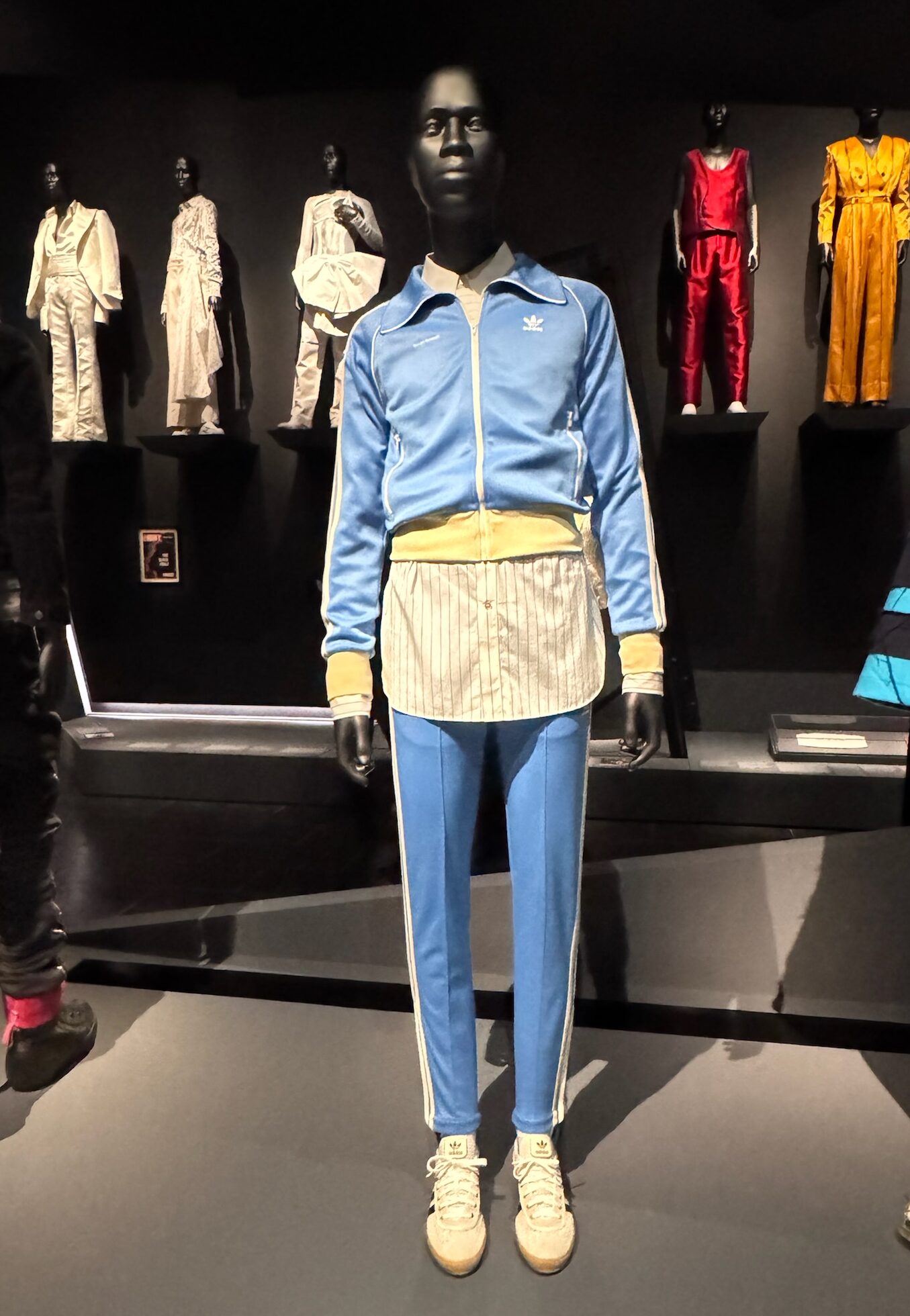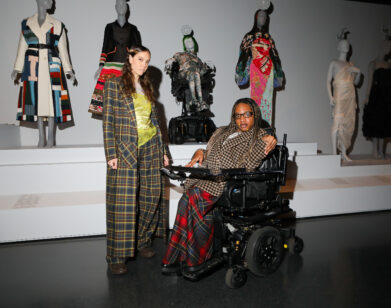MET
Jeremy O. Harris and Met Curator Monica Miller Give Us a Lesson in Black Dandyism
When Barnard academic Monica Miller wrote Slaves to Fashion, her 2009 cultural history of the Black dandy, she never quite expected her research to reach the global stage. But more than a decade later, the book has made her the ideal guest curator for one of the world’s most hotly anticipated museum surveys. Superfine: Tailoring Black Style is the Met Costume Institute’s spring 2025 exhibition, a tribute to the sartorial defiance and provocations of Black dandyism. So at tonight’s Met Gala, Miller expects “audacity everywhere,” as she told one of her favorite red carpet stars, self-identified dandy Jeremy O. Harris, who last month penned the text for Vogue’s cover story on the subject. A week before the opening, the playwright and curator got on the phone to talk about the dynamism of Black style: “In this context,” Miller says, “reification is akin to death.”
———
JEREMY O. HARRIS: How are you?
MONICA MILLER: It’s a whirlwind today.
HARRIS: It’s the week before.
MILLER: Yeah, it’s very crazy.
HARRIS: I want to start off with my big first question, which is, should white people be scared to come?
MILLER: Absolutely not. Are Black people scared to come normally? No.
HARRIS: That’s a great way to put it. I mean, I’m encountering a lot of people saying in quiet tones, “It’s exciting, but it’s a little weird, right?” I’m like, what’s weird about it? Was China: Through the Looking Glass weird to you? I think there’s an inherent provocation to putting the word Black in front of anything in fashion. What was the conversation that led to it being Black dandy and not just dandy?
MILLER: Andrew [Bolton] was working on In America. There were 19th century Black designers in that show—Elizabeth Keckley, for example. He talked to a bunch of Black designers about their influences and what they thought about Black representation, and then started thinking about dandyism and ended up with my book. Then it became a conversation about what it means when a dandy is racialized as Black. If you look at the history of dandyism, its origins are at a historical moment in the slave trade when Europe enters what’s called “the world of goods.” Dandies used some of those newly available foreign goods as accessories to distinguish themselves at the same time that Black people were being used for conspicuous consumption. They used the power of dandyism to re-humanize themselves. The relationship between Blackness and dandyism is actually a way that we can think about modernity.
HARRIS: And a way that we can think about what capital looks like. One of the most striking things about the show—I’ll show you right now, I have the book. I haven’t opened it yet because it’s so pretty.
MILLER: I know you want to open it. [Laughs]
HARRIS: I need to. But it was the way it starts with how Black bodies were literal objects inside of some of these figurations, like on a silver teacup or as an ornament in a painting. Then their bodies being capital becomes more complicated when they start to have access to some form of capital. It becomes a point of derision, and humor as well. The idea of capital, and in a way, flossing, is so embedded in what makes the Black dandy make sense for me. I was at a very fancy bar last night and multiple people were wearing those Fear of God Essentials hoodies. I’m like, this is only because of Black dandies saying that I can wear my sweatpants anywhere.
MILLER: Absolutely.
HARRIS: How much did hip-hop inform this exhibition?
MILLER: That’s where the exhibition is super different from my book, and in a really great way. In writing the book, I had to think about dandyism under certain parameters so that I could actually write about it, and not have a book that never ended. But the translation of the book from primarily thinking about literature and visual culture into an exhibition that’s about fashion and objects meant that I could think in multiple genres, but also expand historically. I’m writing about Janelle Monae, about hip-hop and fashion and contemporary streetwear. Being able to bring that into the exhibition was fantastic. And to think about the suit as everything from a bespoke tailored suit in the 19th century to a Grace Wales Bonner tracksuit—both are equally as elegant and intentional and accessorized.
HARRIS: Yes.
MILLER: So white people shouldn’t be scared, because there’s entry points here for everyone. Entry points that are high and low fashion, and also entry points of accessory, like what it means to have a single accessory. That can be a dandiacal act.
HARRIS: I think I am going to have just one accessory, actually.
MILLER: Really?
HARRIS: There might be two, but there’s definitely one major accessory.
MILLER: That’s what I mean. It’s so intentional, right? It’s telling a story. It’s doing some work. I wanted to do everything from that small moment to the big glam. I wanted to show that diversity in possibilities, because people really use them. I don’t want to think about the beginning of Black dandyism as happening to Black people. No, the minute it happened, they understood what it meant. Like, bam.
HARRIS: I had to write that essay for Vogue, and I was anxious because so much of it was talking about how being a Black dandy is in opposition to our oppression. Then I had this breakthrough halfway through writing, like, it’s actually so much more than that. It’s an innate thing. Was there any anxiety about that, even titling your book Slaves to Fashion?
MILLER: The title is meant to be cheeky. There were many other versions of it, like From Slaves to Fashion. But like, are they really slaves? When we think about Sapeur culture, or somebody spending $300 on a pair of sneakers when they maybe could have used that money in a “more productive way,” I really wanted to question that through the title, and then provide a history of why that might be the case, and for so many people within Black culture, not an issue. Right?
HARRIS: Yes. I grew up in a household where I never went hungry, but I know certain bills didn’t get paid on time because I needed to have the right suit for church that Easter. You rob Peter to pay Paul.
MILLER: Absolutely.
HARRIS: And on Fox News, that’s a talking point about a single Black mother and the ways in which she misappropriates her money. But on HBO, it’s an endearing thing about Carrie Bradshaw because she needed those Manolo Blahniks. I love flipping those inquiries around Blackness, and there is a lens on Black fabulosity because so many people are constantly playing catch up to it. Sometimes the critique is a way to limit it.
MILLER: Yes. Some people have asked me the question, “When does Black dandyism end?” And I’m like, it doesn’t end, because Black people are always outrunning some negative, problematic idea about them. Black culture is dynamic for a reason, because nobody wants to get “captured.” It’s just in constant movement. I don’t know what Black dandyism is going to look like in 20 years, because there’s this inherent dynamism that Black expressive culture has, and has to have, so it doesn’t get reified. In this context, reification is akin to death.
HARRIS: One hundred percent. My first Met Gala was Notes on Camp. That was exciting because me and Mel [Ottenberg] got to really dive deep into academia, and I was at Yale at the time. I feel like since then, the need to read a JSTOR article or read footnotes in preparation hasn’t been a part of the themes as much, and now it’s back again. Did you and Andrew or Anna [Wintour] talk about what it means to have so much academy brought to the fore for this Met Gala?
MILLER: We haven’t talked about it, but I have remarked a number of times. I never thought that I would get people who are not fellow academics or students studying up. It’s so great to me. It’s an assignment. Do your work and then show the work.
HARRIS: Exactly. I’m very excited to get a straight As.
MILLER: [Laughs] I mean, I’m not going to be giving out grades, necessarily.
HARRIS: You aren’t?
MILLER: Not out loud.
HARRIS: [Laughs] You need some version of the fashion police at the top of the stairs.
MILLER: I’m so interested in seeing the work people are putting in. I never expected to be teaching on such a large scale.
HARRIS: I love that statement. There’s a part of my look that’s audacious, but refined. I am yearning to see who’s going to be audacious. Which era do you think is the most audacious that you hope people might pull from?
MILLER: I see audacity everywhere. That’s such a hard question, but one of my favorite sections of the exhibition is the beauty section, when menswear starts to take on elements of typically female or feminine dress. Lace, ruffles, bold color. I think there’s a lot that could happen there. I started studying dandyism because I’m really interested in the nexus of gender, race, class, and sexuality. There could be something fascinating there.
HARRIS: That is the place. I think that men having that free the nipple moment is so audacious for Black men as well, because it invites a sort of sensuality and femininity that is not necessarily celebrated. Even if we love Prince or are obsessed with Dennis Rodman, it still always feels like that’s our cousin over there. You know what I mean? It’s not the person in the middle of the room.
MILLER: [Laughs] Literally, our cousin over there. Yes, entirely.
HARRIS: Growing up, did you have a relationship with the Met Gala? Was it ever a thing for you?
MILLER: No, although I keep getting these weird sense memories as I’m doing this. A couple of high school moments have come back to me recently. One was my social studies teacher always saying, “I want you to read the newspaper,” and he always began with current events, which was great. Then he said, “I also want you to be writing articles,” so every so often, he would let us write an editorial opinion.
HARRIS: Oh my gosh.
MILLER: I think the first one that I wrote was about the gray suit.
HARRIS: Whoa.
MILLER: I know. I’m like, where did that even come from?
HARRIS: That’s amazing.
MILLER: And another thing I remember, I’m from a small town in southeastern Connecticut, and I came across an article about Jean-Michel Basquiat in my local newspaper. There was a picture of him, and I looked at him and I was like, who is this? I cut it out and I put it on my wall. There was something here about this man. He was probably standing in front of one of his paintings. I was like, something in this is my future, and this is something I need to know a lot more about. So no Met Gala, but really interesting style moments that had nothing to do with the context of my regular life.
HARRIS: I adore that. I didn’t grow up knowing the Met Gala until high school, and that was when Anna’s reign made it the cultural thing that it is today. It just started then. I think there was a Sex in the City episode where they mentioned it. The moment it started to matter to me, which feels self-aggrandizing because we’re in a magazine that he is the editor-in-chief of, but it was when Mel started working with Rihanna on her looks for the Met Gala. That’s when I really took notice. And having gone through your book and your exhibition, I think China: Through the Looking Glass was the moment when the Black dandy broke the Met Gala, in a way. She is a great example of the dandy.
MILLER: That moment, and that dress.
HARRIS: That dress did what it did.
MILLER: When you say “that dress,” everybody knows.
HARRIS: It really broke something in me. I keep aspiring to have that moment. I don’t know that I’m the man that has that moment in me, but I’m very curious what man this year might crack open the red carpet that way.
MILLER: It could be like an explosion. It could be fireworks. I am thinking, bam, bam, bam.
HARRIS: Is there anyone that you’re most anticipating? I know I’m one of your favorites, but who else?
MILLER: You are one of my favorites. The co-chairs are really well chosen. I mean, last year when Lewis [Hamilton] was on the carpet and he was telling the story of his look, it was so steeped in history and honoring people who came before. Dandyism is very intentional, and it was intentional.
HARRIS: Yes.
MILLER: And there are so many words to describe A$AP Rocky, but, panache.
HARRIS: Panache is such a good word.
MILLER: Then Colman [Domingo], I wrote about him last year in a paper that I gave in London. Pharrell’s has been in the game. And then LeBron has stature, in various ways. It’s a constellation, and they’re well chosen because they’re doing it in all different ways, but as a group, really showing you how to get it done. I’m excited for those constellations. There’s something for everyone.




















